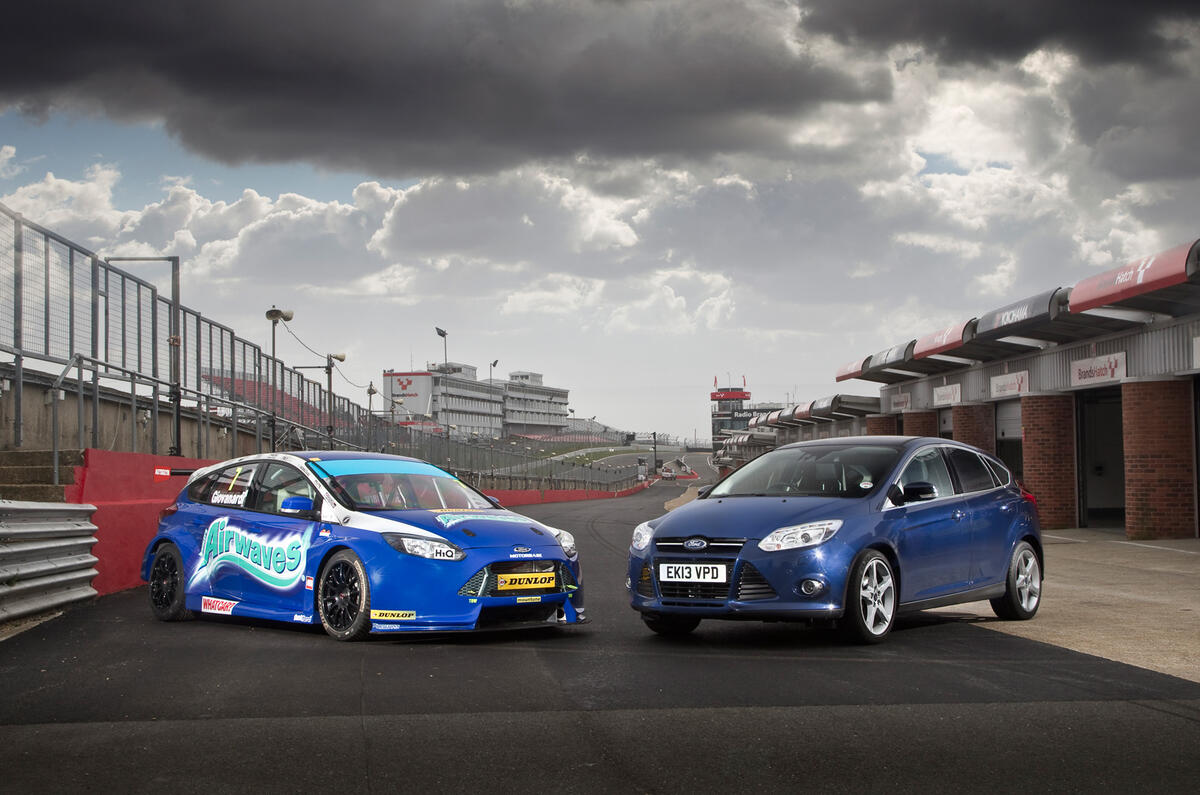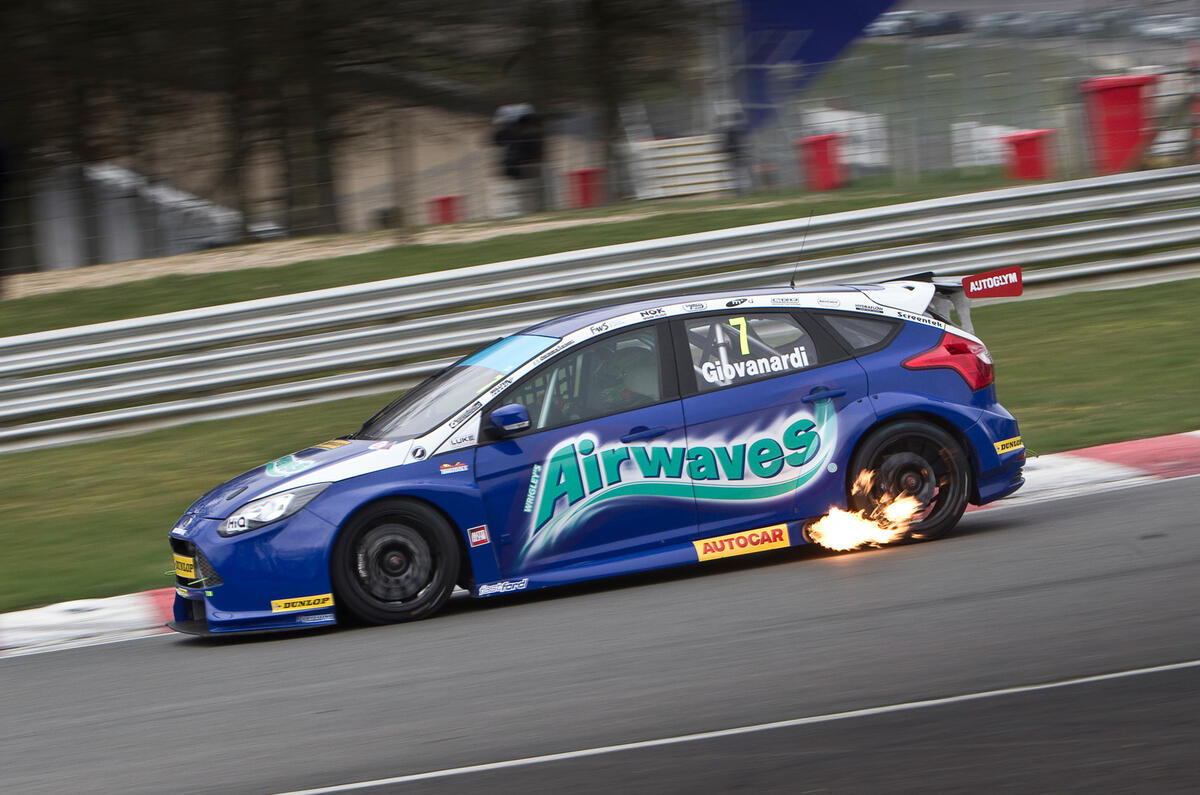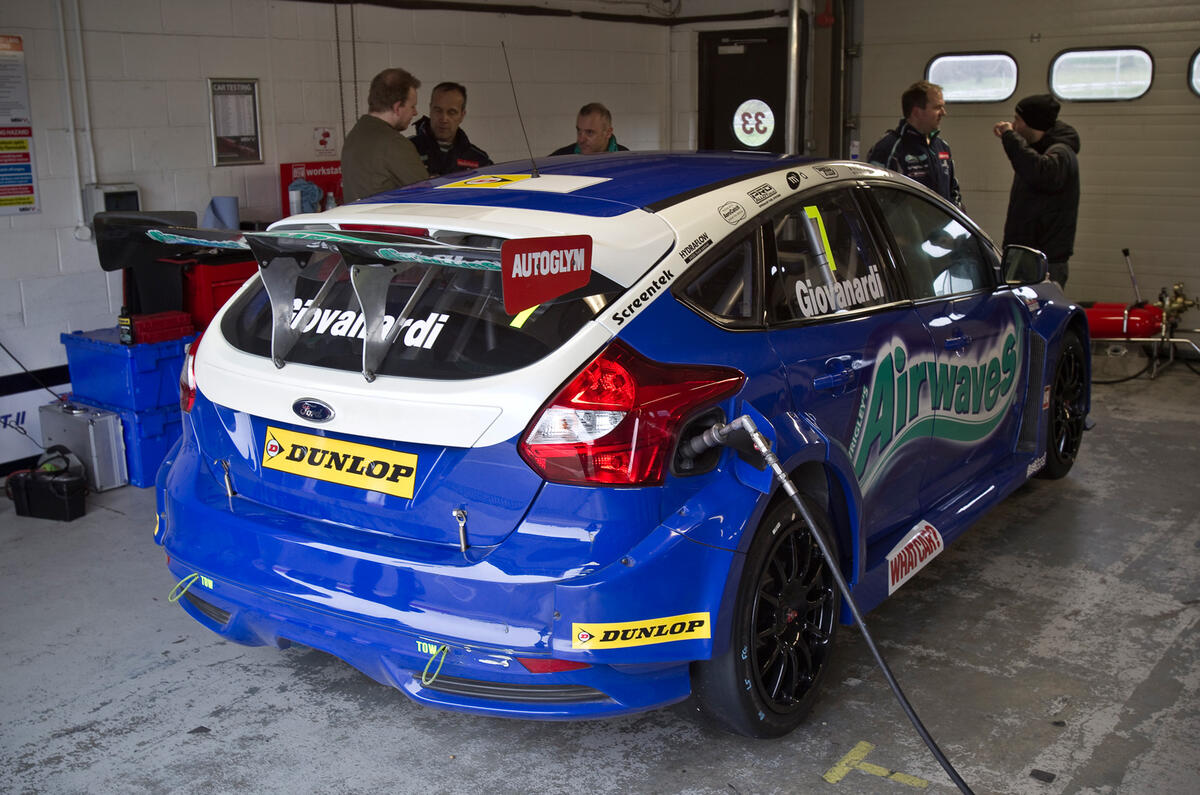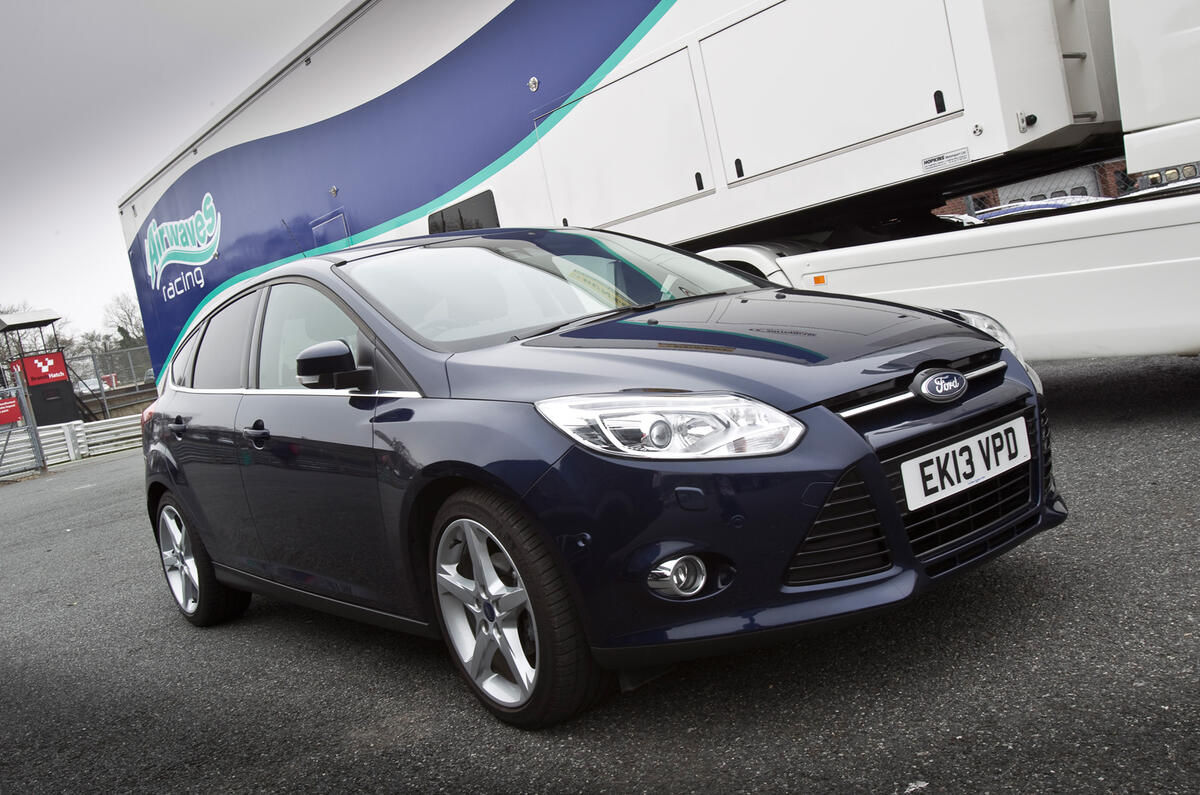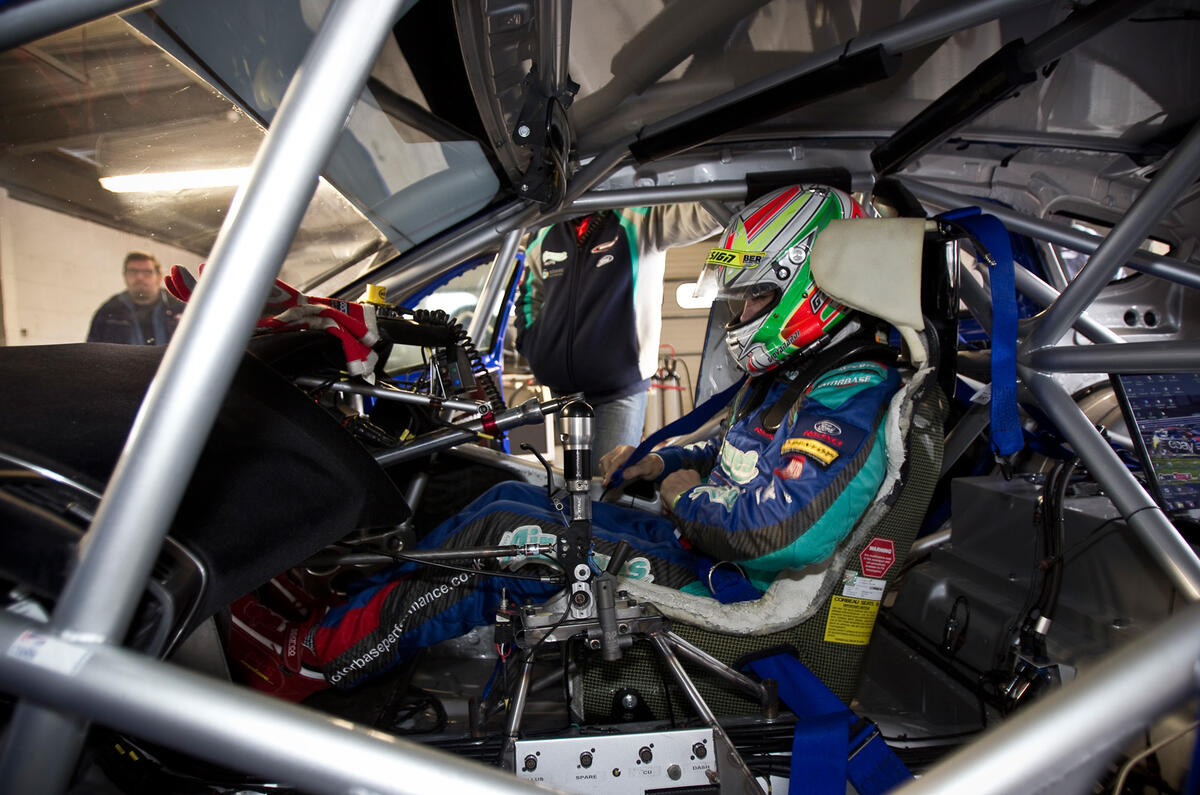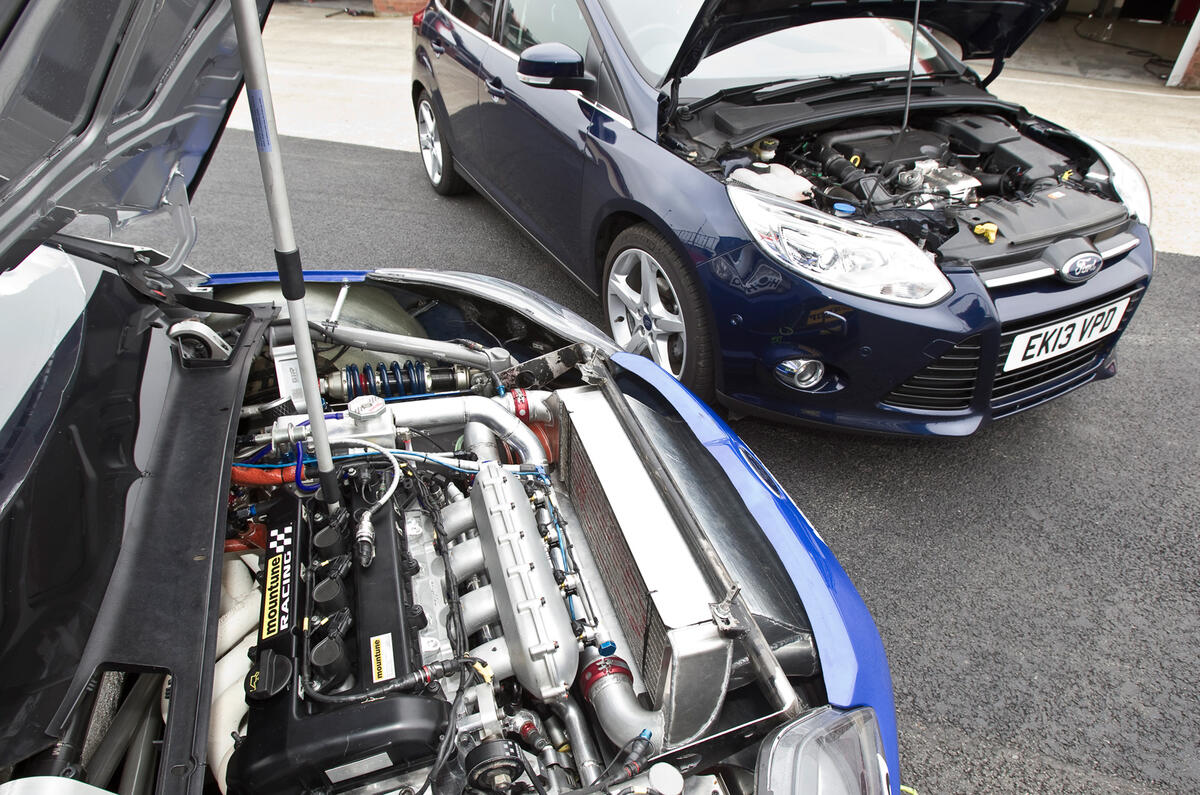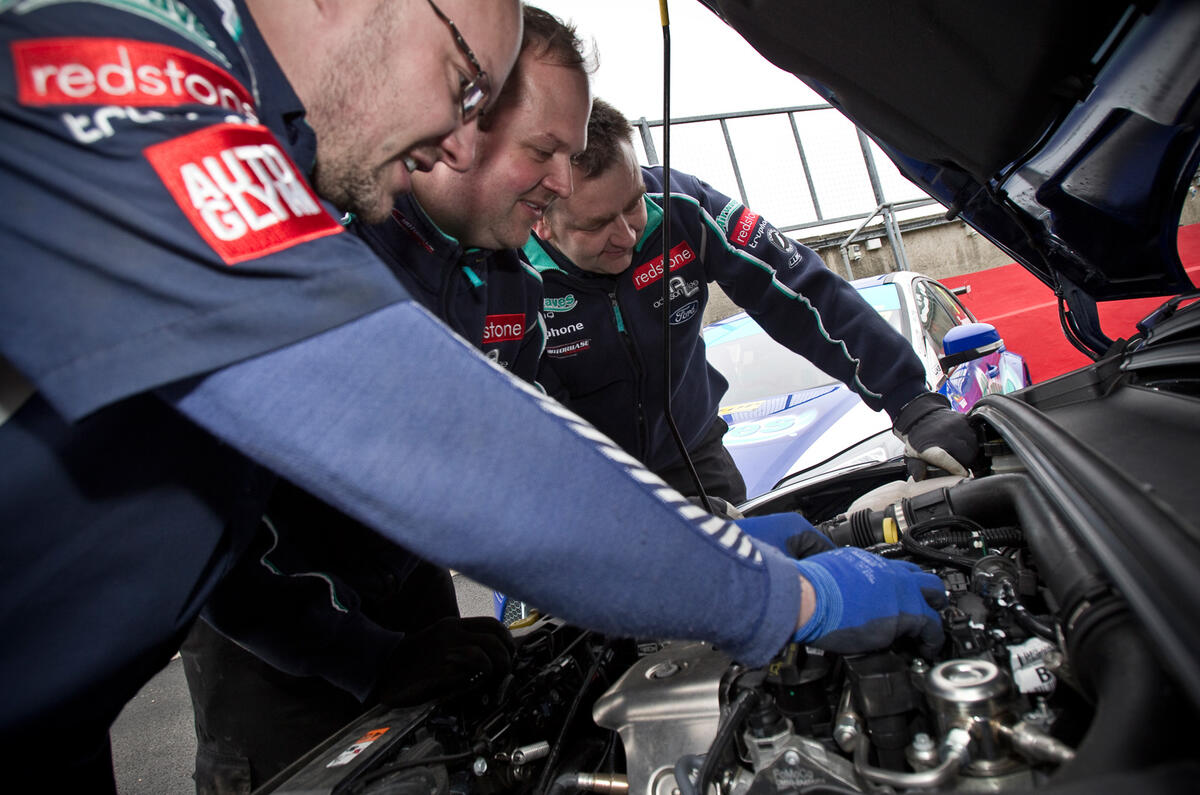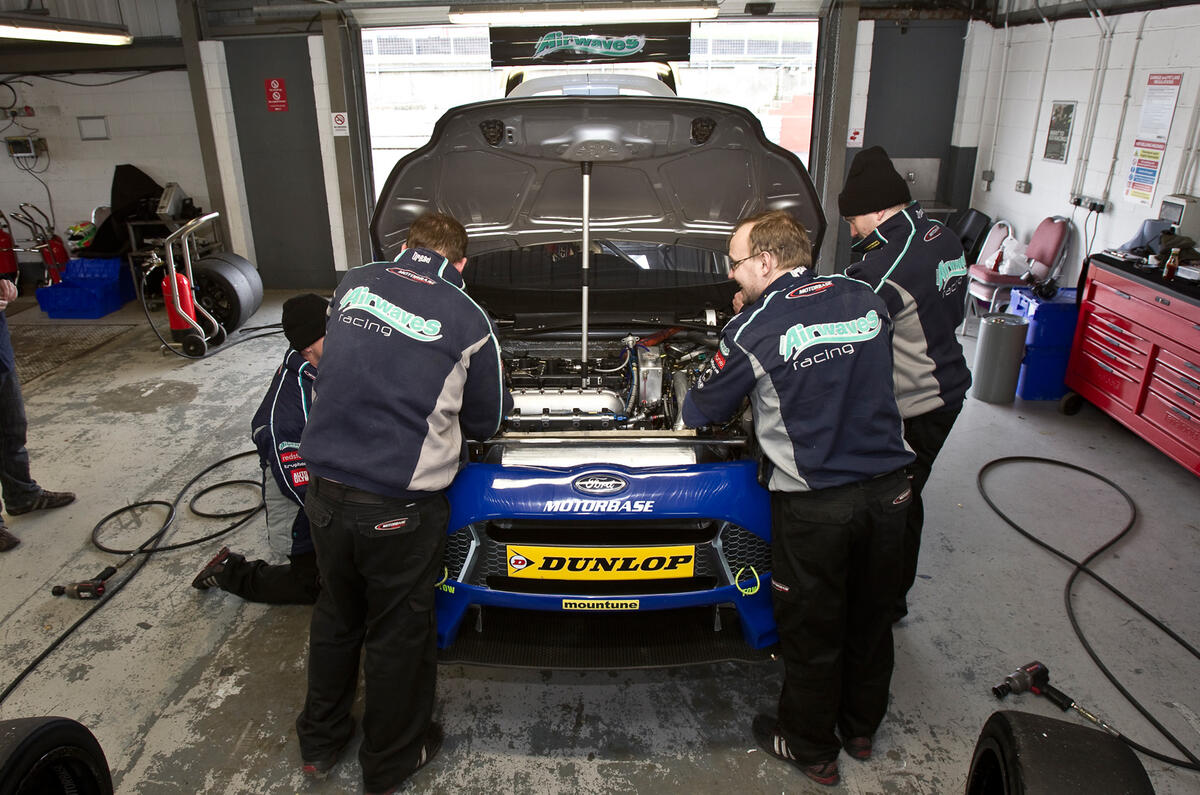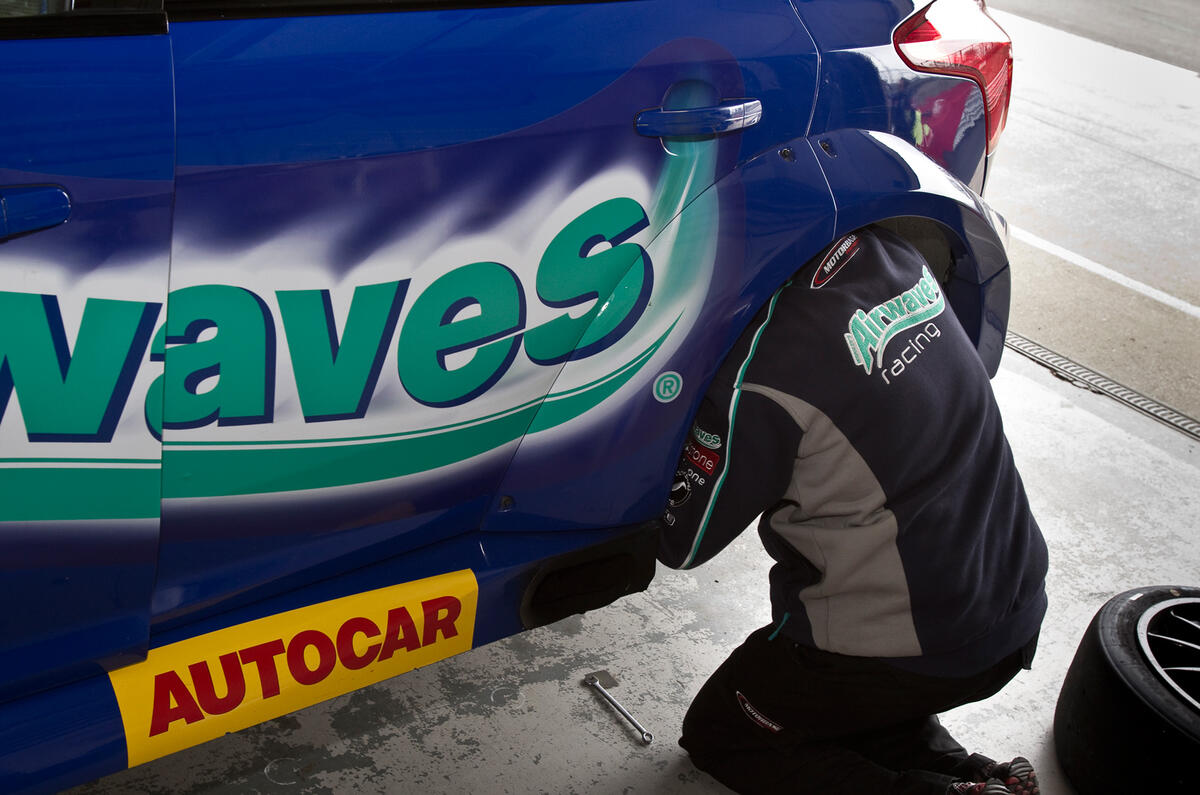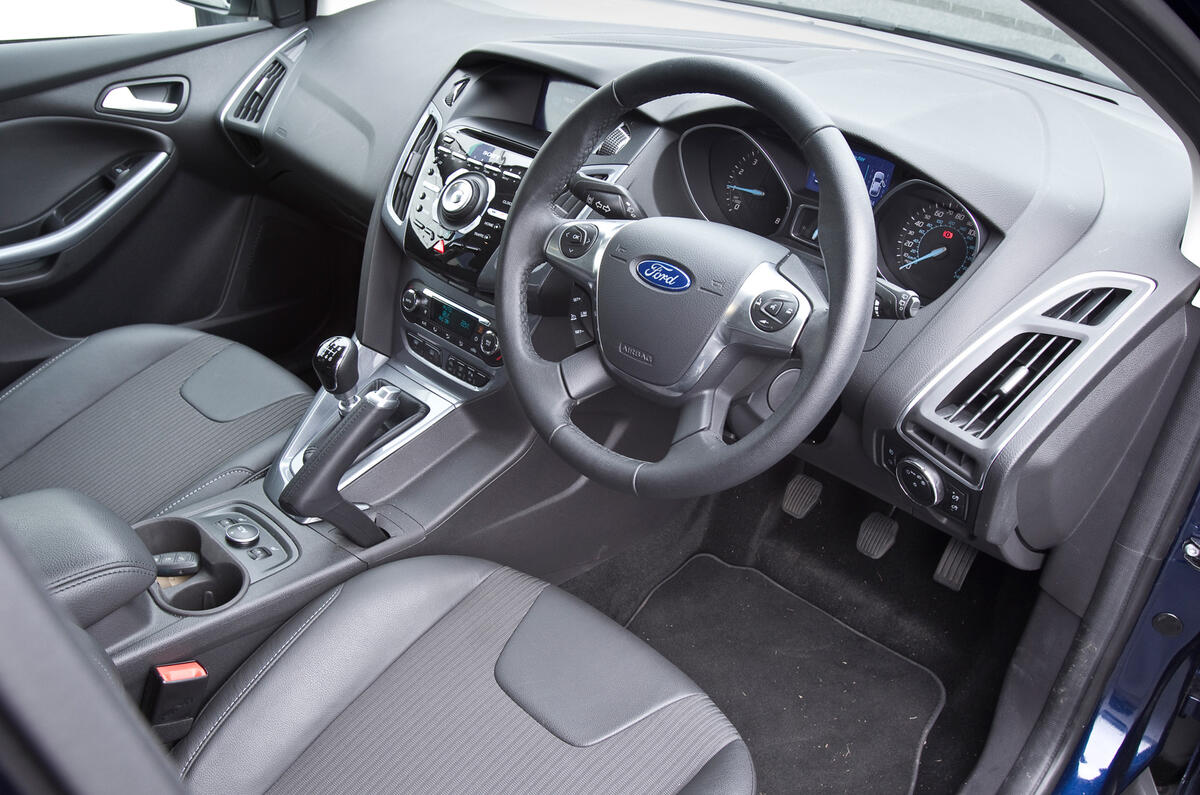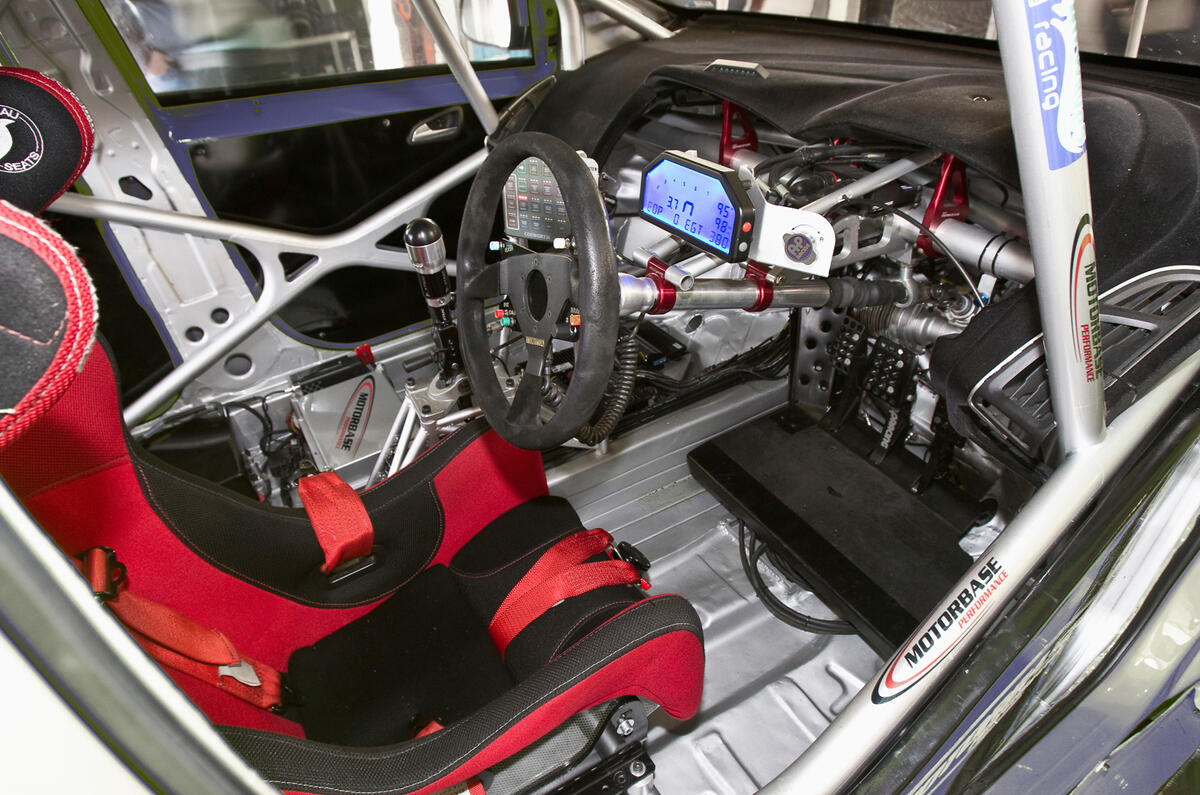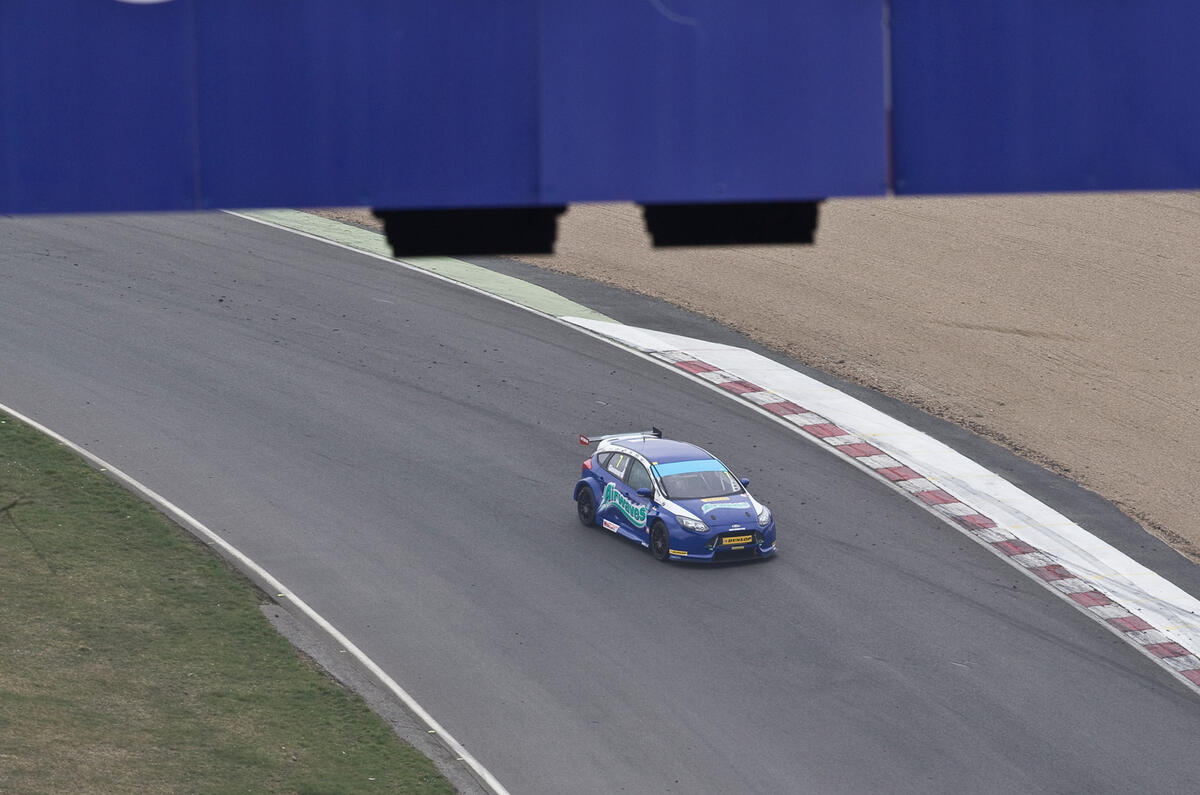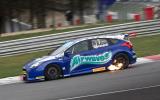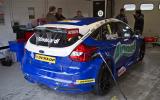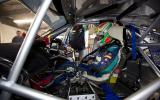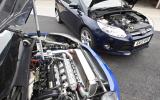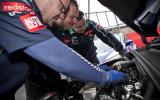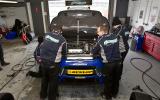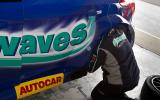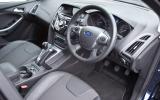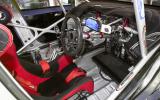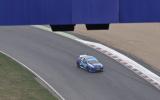The premise of the Dunlop MSA British Touring Car Championship is that it contains cars that trackside fans can relate to. A quick glance at the car park at Brands Hatch’s opening rounds this Sunday will demonstrate the fact - the cars on the grid are the cars that people use in everyday life.
But the race machines themselves are the product of thousands of man-hours and detailed reworking which is more usually associated with the very highest levels of the sport.
Airwaves Racing is a multiple race-winning team in the BTCC, and it is likely to be a leading player in this season’s competition because it has recruited double champion, Italian Fabrizio Giovanardi, to handle its Ford Focus ST.
The outfit is based just a few miles from the gates of Brands Hatch in Kent, and its HQ is where the race machine takes shape.
Team manager Oly Collins explains: “Some teams might just buy a bodyshell but we prefer to buy a complete road car and go from there, because there are several parts that we can carry over. Things like the door rubbers, some of the wiring loom, the light clusters, doors and bonnet will all come in useful for us later on.
“The first job is to strip the car back down to the bare bodyshell, and then we take it to be acid-dripped. We do this so that the paint is stripped away and it also makes it a better surface to weld things to. It removes all the sealant from the other parts of the shell and other materials that are put in to sound proof the vehicle. It literally is back to the bare metal.”
Once the car is returned to the team after this process, there is more refinement to be done before the hard work can begin on turning it in to a race machine. More of the vehicle’s basic features have to be removed.
“You have to de-bracket the car,” says Collins. “We will remove the fixtures for the seat belt, for example, and the roof lining. We will pare everything back, and that has the benefit of lightening the vehicle as well.”
Then the precision work starts. When a road car comes off the production line, the theory is that everything is identical. But in the motor racing world, where millimetres count, even that has to be double-checked.
“We will put the car on a jig, which has the precise measurements we want for the suspension pick-up points and things like that because we need repeatability. Everything has to be exactly the same from race car to race car,” says Collins. “The road cars are generally very good in terms of being exact, but when you are dealing with racing cars we go to a different level of precision.”
Once the crew is satisfied that the car is to the exact dimensions it requires, then the first of the race-bred parts can begin to take shape.
The British Touring Car Championship mandates a number of controlled parts, determined by the series organisers, which are common across all race machines. These are called the Next Generation Touring Car rules (NGTC) and were introduced in 2011 to help curb the spiralling costs in tin-top competition in the UK.
Collins says: “We have to install both the front and rear subframes, which are standard NGTC parts built by a firm called GPRM. We strip the bodyshell back to the bulkhead and then put the front subframe in, which will also have been on a jig to make sure that it is absolutely accurate. Things like this are vital, because a wrong measurement here will affect the handling of the entire machine.
"From there, we will add the suspension pick-up points to the front and rear subframes. Within reason, they have to be similar to the road-car pick-up points to comply with the rules. There is an aerodynamic splitter that is attached to the front of the car, and where that fits on to the subframe dictates the height of the suspension pick up points – you can’t have it too low, otherwise you would fail the mandatory ride-height tests that take place after each of the on-track sessions.”
After the suspension process is completed, the base of the fuel tank is then welded in to the car and the rollcage is also installed, again welded to the shell of the car. The machine is now beginning to take shape, and it has already taken two men six weeks and 1000 man-hours to get the nascent race machine to this stage.
Airwaves Racing is one of the few operations on the British Touring Car Championship grid to have its own in-house paint shop, so the car is then coloured in deference to the team’s main backer.
“After the suspension work is done we will install our engine, which is a two-litre turbocharged Mountune-developed motor that puts out between 320-330bhp and it is mated to a standard six-speed sequential Xtrac gearbox,” explains Collins. “We put the suspension together, with the wishbones and the dampers, which are standard Penske-built units. There are certain things that we can develop ourselves within the dampers such as the shims and the valves, and the springs are also free for us to choose. We use ones that are built in Australia.
"Alongside the engine installation, there are certain bespoke parts that we can then put on the car, such as the fuel lines, oil lines, alternator and manifold. We can create certain parts but they have to be homologated before the start of the season so that they remain the same for the rest of the year.
“What is different from a road car is that we fit the car with a huge number of sensors, even on things like the suspension. That means we can monitor its movement and that helps us refine the handling over the course of a race weekend. That’s something that is very important to us.”
While the suspension is being bolted on, other engineers set to work installing the internals of the cockpit area of the car, including the racing seat and six-point harness, as well as the highly complex electronic dashboard.
With the advent of turbochargers in the BTCC, one of the key areas that teams have had to work on is the cooling of the engine bay. It is a new issue that engineers have had to figure out.
Collins says: “The intercooler that we use has a common core, but we are free to introduce any ducting that we want. In terms of the bodywork, we have a free hand to do what we want but any designs that we have also have to be homologated ahead of the season. We have to submit an application to the series’ technical officials ahead of the build process for them to approve it, and then that is also homologated and set in stone.
"While there are certain parts of the design process that are completely free to us, there is the provision in the rules for the series boss, Alan Gow, to say no to anything he might not like! There is an area that is 200mm below the bumper where we have a free hand in terms of the styling and that extends out to the edge of the front wings, which are wider than on a road car because the BTCC cars have to be built to a mandated width. The front grill has to resemble the scale and positioning of the road car.”
The car is virtually completed now, with the controlled AP brakes fitted and the outside of the car stickered up to make it look like a racing thoroughbred. After a quick check on the flat patch to make sure everything is set exactly as it should be, the team is ready to load the car into the race trucks and head for the circuits.
Collins says: “By the time we have completed everything, including buying the mandated parts, the component cost alone can be in the region of £200,000. To get everything together usually takes up to five months, but we managed to do a complete car in seven weeks in 2012 – because that was a self-imposed deadline. That was during the middle of a season, though, which meant there was less demand on the parts suppliers.
"Including the man-hours involved in creating the car, you are looking at between £220,000 to £240,000. It is a long way from your average family hatchback…”

